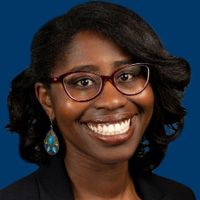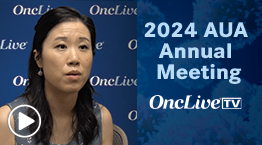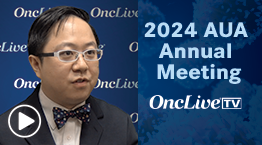Updates in Management of Mantle Cell Lymphoma
Transcript:
Michael Wang, MD: I want to give you a landscape of the background of everything, starting with myself. I came to America in 1988. I was born in a city of 10 million people in Shandong Province of China. A lot of people don’t know that Shandong Province is where Confucius is from. After medical school at Shandong Medical University and graduate school at Beijing University, I went to Bethesda, Maryland, and studied in the National Institutes of Health [NIH] under a very prestigious scholarship at the Fogarty International Center. I’m very indebted to the 2 countries. First, the country where I was born, I studied, and all the tuition was paid. Secondly, this land of freedom and opportunity gave me that opportunity for a small boy like me from the middle of nowhere to study in such a prestigious institution, NIH. I worked in the lab very hard for 6 years and learned so much.
I feel very grateful to both, and I want to give back. I want to save as many patients as possible. I want to save American patients, Western patients, and all patients around the globe, and only science can do that. When I was in college, even when I studied in the NIH in the laboratories, I never knew about mantle cell lymphoma. I never knew I would become a lymphoma doctor and then a mantle cell lymphoma doctor. Life just takes you where it is. In this opportunity, I’m trying to work with my team and other respected colleagues in the field, so together we can make a dramatic impact for our patients and their families.
The BTK inhibitors belong to a category called the targeted therapies. Before targeted therapies, we treated patients with chemotherapies. Chemotherapies are very toxic. They get rid of the hair.
Twenty years ago, when I was in the Fogarty fellowship program, I came to the clinic and saw suffering and death all the time. It’s changed dramatically. We now have therapy for mantle cell lymphoma, for lymphoma, and even for the whole hematologic disease malignancies. It has migrated from chemotherapy to targeted therapies to cell therapies and in future to precision therapies.
When we are talking about first-generation ibrutinib, second-generation acalabrutinib, the newly approved zanubrutinib, they belong to a class called targeted therapies. We also call them chemotherapy-free therapies. Now, chemotherapy and chemotherapy-free therapy cannot cure all patients. Then we use cell therapies. Cell therapy with all the chemotherapy, chemotherapy-free, cell therapy cannot cure all diseases. We’re looking in future to precision medicine. The field is moving so fast, many things are happening all together. It has never been a better time to be an academic hematologist-oncologist. For mantle cell lymphoma, it’s 1 of the fast-moving areas. It is never a good time to have mantle cell lymphoma, but today most patients can live for many years. I really think in my career, with help of the whole field, together we can cure a fraction of mantle cell lymphoma patients.
Transcript Edited for Clarity



